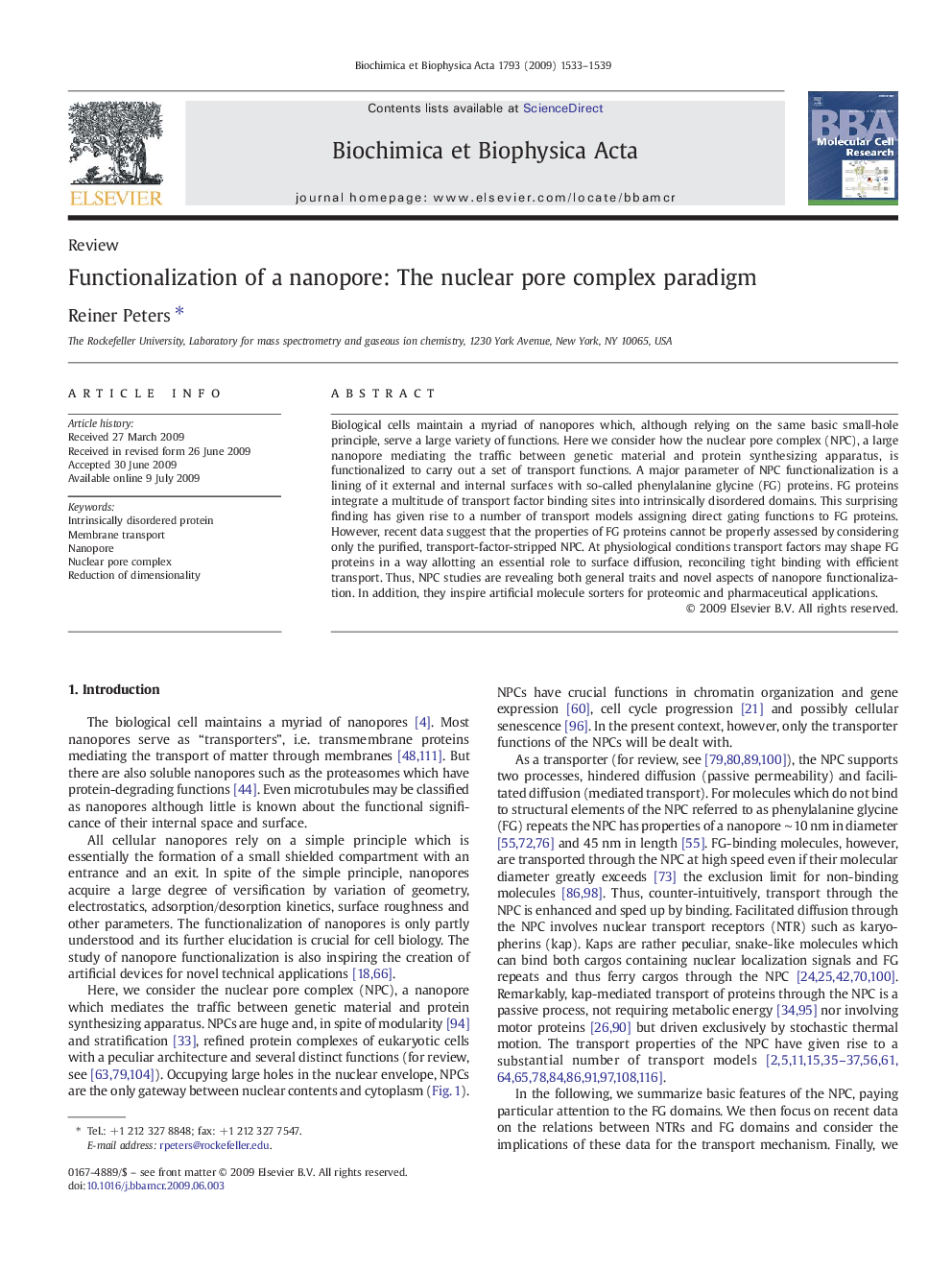| Article ID | Journal | Published Year | Pages | File Type |
|---|---|---|---|---|
| 1951079 | Biochimica et Biophysica Acta (BBA) - Molecular Cell Research | 2009 | 7 Pages |
Biological cells maintain a myriad of nanopores which, although relying on the same basic small-hole principle, serve a large variety of functions. Here we consider how the nuclear pore complex (NPC), a large nanopore mediating the traffic between genetic material and protein synthesizing apparatus, is functionalized to carry out a set of transport functions. A major parameter of NPC functionalization is a lining of it external and internal surfaces with so-called phenylalanine glycine (FG) proteins. FG proteins integrate a multitude of transport factor binding sites into intrinsically disordered domains. This surprising finding has given rise to a number of transport models assigning direct gating functions to FG proteins. However, recent data suggest that the properties of FG proteins cannot be properly assessed by considering only the purified, transport-factor-stripped NPC. At physiological conditions transport factors may shape FG proteins in a way allotting an essential role to surface diffusion, reconciling tight binding with efficient transport. Thus, NPC studies are revealing both general traits and novel aspects of nanopore functionalization. In addition, they inspire artificial molecule sorters for proteomic and pharmaceutical applications.
